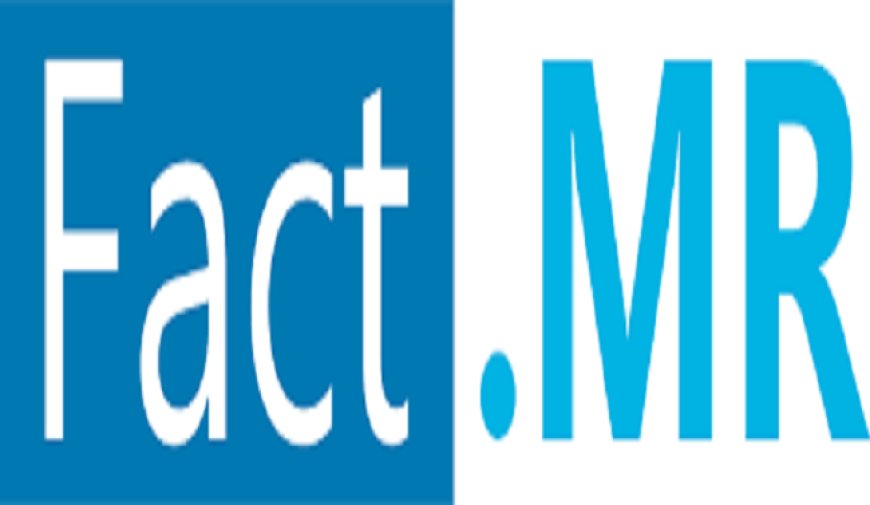Technological Advancements in Manufacturing Propel Aroma Chemicals Market
The aroma chemicals market was valued at US$ 5.21 billion in 2022 and is projected to grow at an impressive CAGR of 4.7% from 2022 to 2032, reaching a market size of US$ 8.11 billion by the end of the forecast period.

The aroma chemicals market was valued at US$ 5.21 billion in 2022 and is projected to grow at an impressive CAGR of 4.7% from 2022 to 2032, reaching a market size of US$ 8.11 billion by the end of the forecast period.
Aroma chemicals are key ingredients used in the creation of fragrances and flavors, forming the backbone of industries such as personal care, food and beverages, and household products. These chemicals, either naturally derived or synthetically produced, deliver specific scent or taste profiles that enhance product appeal. With their application ranging from fine perfumes to everyday items like soaps, detergents, and beverages, aroma chemicals play an essential role in consumer experiences. The market is steadily expanding due to the growing demand for scented products and evolving consumer preferences, making aroma chemicals an indispensable segment of multiple industries.
Market Insights
The aroma chemicals market is shaped by a mix of consumer trends and technological advancements. Increasing awareness about personal hygiene and the rising popularity of premium fragrances are driving the market’s growth. Synthetic aroma chemicals, due to their cost-effectiveness and consistent performance, dominate the market, but there is a rising demand for natural aroma chemicals as consumers lean toward sustainable and organic products. Additionally, companies are investing in research and development to create innovative blends that cater to niche markets, including allergen-free and vegan-friendly fragrances. The market's regional dynamics also reflect diverse consumer preferences, with Asia-Pacific leading due to a burgeoning middle class and robust manufacturing base.
Market Outlook
The future of the aroma chemicals market appears promising, buoyed by emerging trends and technological progress. The rising interest in personalized fragrances is expected to reshape the market as brands offer bespoke scents tailored to individual preferences. Furthermore, the incorporation of advanced biotechnology in aroma chemical production is set to revolutionize the industry by reducing reliance on traditional methods. The demand for green and sustainable practices is also fostering the development of bio-based aroma chemicals. As consumer demand for innovative, eco-friendly, and unique scent profiles grows, the aroma chemicals market is poised for sustained growth and diversification.
Dynamics and Growth Factors
The aroma chemicals market is driven by a combination of factors, including changing lifestyles, growing disposable incomes, and heightened awareness about personal grooming. The expanding global population and increasing urbanization are boosting demand for personal care and home care products, directly impacting the aroma chemicals market. Additionally, the food and beverage industry relies heavily on these chemicals to enhance flavor profiles, which further supports market growth. On the supply side, advancements in synthetic chemistry and biotechnological methods have enabled manufacturers to produce high-quality aroma chemicals efficiently, further stimulating market expansion. However, challenges such as fluctuating raw material prices and regulatory constraints may temper growth.
List of Key Companies Profiled in The Report
- Kelkar Group
- BASF SE
- Hindustan Mint and Agro Products
- Solvay
- Symrise AG
- Robertet
- Kao Corporation
- Others
Recent Industry News
The aroma chemicals market has recently seen several exciting developments. Many companies are expanding their portfolios to include bio-based and natural aroma chemicals to cater to the growing demand for sustainable products. Partnerships between fragrance houses and biotech firms have also gained momentum, with the aim of creating innovative solutions through advanced fermentation techniques. Moreover, the introduction of AI-driven technologies in scent creation is gaining traction, enabling manufacturers to design unique and precise fragrance profiles. Additionally, leading players are investing in regional expansions and building production facilities to strengthen their presence in emerging markets such as India and Southeast Asia.
Notable Developments
In recent years, the aroma chemicals market has been marked by several notable developments that highlight its dynamic nature. Companies are focusing on sustainability initiatives, including the adoption of green chemistry principles and the use of renewable raw materials for chemical synthesis. Innovations in microencapsulation technology, which improves the stability and longevity of fragrances, are also reshaping product development strategies. Furthermore, the rise of e-commerce has provided new platforms for the distribution of aroma-chemical-based products, particularly in the personal care segment. Collaborative research projects between academia and industry are advancing the understanding of olfactory science, leading to the creation of novel and high-performing aroma chemicals. These developments underscore the market's adaptability and potential for continued growth.
Competitive Landscape
Key players in the aroma chemicals market are leveraging rising demand through collaborations, partnerships, and acquisitions. Notable developments include:
Firmenich SA commissioned a renewable ingredients production unit in Castets, France, operational from January 2022.
Givaudan launched VivaScentz™ in June 2020, an innovative fragrance technology promoting consumer well-being across various product categories.
BASF acquired Isobionics in June 2020 to establish a distillation plant at Brightlands Chemelot Campus, focusing on new flavors and fragrances.












